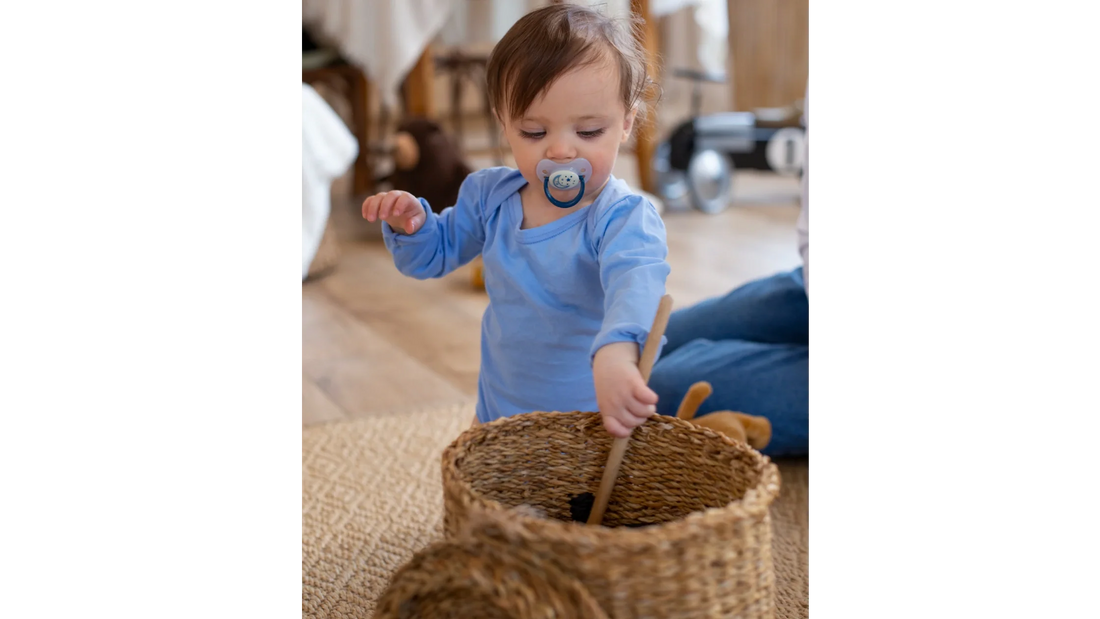Treasure Chest: The Game is a Continuous Discovery
Often newborns are given toys that are all very similar, perhaps expensive, but mostly not very interesting for the little one. The treasure basket was created precisely to allow the child to experiment through the 5 senses and satisfy his search for experiences.
Discover the history of this sensory game and how to make a treasure basket on your own.
1. The Story of the Treasure Basket
Being a game used in the Montessori method, the treasure basket is often incorrectly associated with Maria Montessori. In fact, this pedagogical proposal was created by Elinor Goldschmied , a British educator and pedagogue.
The idea was born from the observation of children at nursery school who, from the age when they begin to sit up, are often whiny. Goldschmied had intuited that this attitude could be due to a certain dissatisfaction of the little ones with the games offered , often limiting and not very interesting.
In fact, if we look at the classic toys on the market for 6-month-old babies, we usually find all the accessories made of plastic, which are very easy to clean, but not very stimulating on a sensorial level.
Furthermore, Goldschmied was aware that it is precisely during this growth phase that the brain of newborns develops very rapidly in response to external stimuli coming from the 5 senses and through movement.
From these observations comes the proposal of the treasure basket . This has the aim of helping children to experiment with experiences that involve all the senses precisely in this phase of development in which the little ones are particularly predisposed to receive these stimuli.
2. When to propose the treasure basket
The treasure basket is a game to be proposed from 6-8 months onwards , that is, from when the child begins to sit independently . This is because having free hands, he will have the opportunity to explore and manipulate the objects proposed in the treasure basket.
It is often appreciated as an activity even up to the child's 3rd birthday .
As with any stage of child development, sitting should never be forced. It is important to consider the child's individual development, his interest in the objects around him and his ability to grasp and manipulate objects safely.
Finally, depending on the age at which the treasure chest will be proposed, it will be important to carefully select the accessories to be placed inside and it will be necessary to make sure to create a safe and supervised environment in which the child can freely explore the objects.

3. The benefits of play
But why propose the treasure basket as an activity for newborns?
As we have seen previously, newborns often receive a lot of toys, but most of them are very similar to each other and only made of plastic. The latter is certainly the most comfortable and easiest to clean material, but on a sensorial level it leads the little one to get bored quickly.
The treasure basket, offering different accessories to stimulate the 5 senses, brings important benefits to the child. Let's see them in detail.
Sensory exploration
This activity encourages children to experiment and discover through their senses. Depending on the objects inside the treasure chest , they can explore different textures, weights, shapes, and colors.
Motor development
Manipulating the accessories inside the basket strengthens and develops the little one's fine motorskills and hand-eye coordination .
Cognitive stimulation
Little ones are encouraged to observe, compare and classify the objects in the basket, promoting cognitive development, concentration and problem solving skills .
Language development
As children explore the treasure chest, they can describe and name objects, encouraging language and vocabulary development.
Creativity
Objects are the starting point to allow the child to create stories, invent games and imagine scenarios.
Concentration
This activity leads the child to peaks of concentration that promote the ability to pay attention for longer periods.

